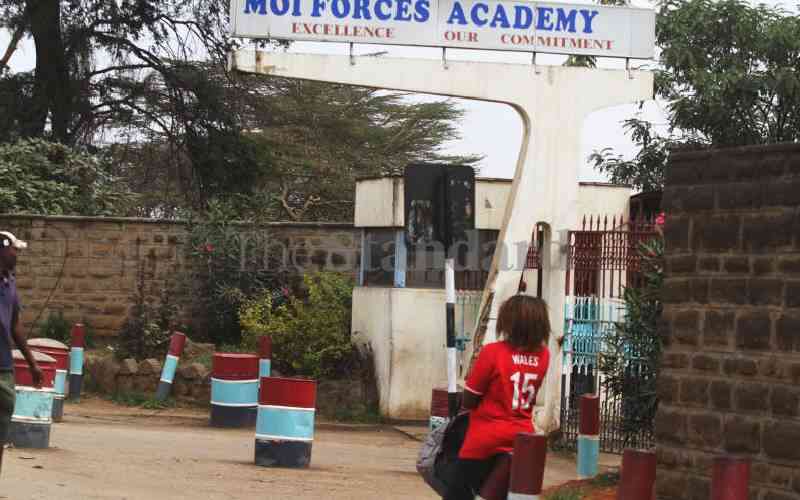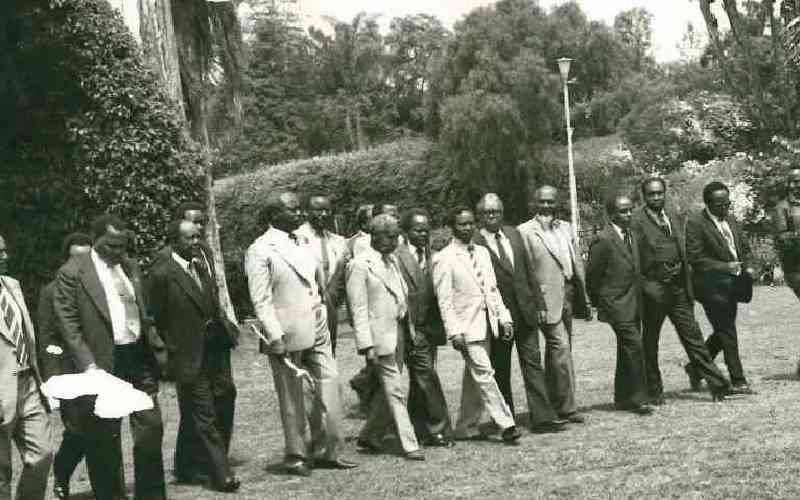Nairobi, Kenya: Harambee One, the Kenyan presidential jet , that has been in the news recently after being forced to return back to Kenya on its way to the US is a Fokker 70 ER that has served the country for the last two decades.
The plane that is managed by the Kenya Air Force was acquired in 1995 due to the need to boost V VIP transport.
The Kenya Air Force Story 1964-2014, a golden Jubilee Commemorative Publication, details how the presidential jet was acquired.
Before 1977, government and state dignitaries visiting local and international destinations were transported using the Aero Commander and Navajo aircraft.
In 1978, the air force started using the Buffalo aircraft which was acquired a year before.
It could take years until January 12 1990 when the VIP Squadron was formally launch after the air force acquired the Canadian Dash 8 aircraft that has advanced technology and twin fuel-efficient turbine power plants.
"These features provided the ruggedness, reliability and performance to meet the requirements of the Air Force. With its pressurised capability, its ceiling is 25,000 feet above mean sea level and is powered by Pratt and Whitney engines," the book notes.
Although the Dash 8 was painted in white and grey, the whole fleet was repainted to white and grey with a strop of the national flag in 1996 and 1997.
Despite the Dash 8 being a reliable aircraft for VVIP travel, it still was not efficient in long distance travels.
"The idea of acquiring a new aircraft to cover more distance around the African continent and even to other countries was then conceived. This was due to the cost and convenience of having a Presidential jet as opposed to hiring a plane from an airline like Kenya Airways which was then undergoing privatization," the book states.
The first steps could be taken in 1994 when the air force decided to acquire the Fokker 70 ER, a medium sized aircraft manufactured in the Netherlands.
On September 20, 1994, the air force sent Lt Col S Githinji to Netherlands with a mission to oversee the construction of the Fokker ER (Extended Range) Presidential aircraft.
Githinji who was the Project Manager of the acquisition was also tasked with building a crew for the Fokker.
The flight, engineering and cabin crew were taken for special training at the Fokker factory where the plane was being constructed.
"The first sight of our Fokker 70 Extended range Presidential aircraft, tail number KAF 308, will remain in our memories for a long time to come. It stuck most of us as the most beautiful plane we had ever seen. It looked elegant with a splendid outside finish," Colonel (rtd) James Gitahi who was the first captain of the plane recalls.
Stay informed. Subscribe to our newsletter
A year later in December 14, 1995, the newly built Fokker 70 ER was taken to Woensdretch Air Force base, Netherlands, for a flight and acceptance test where the plane passed the flight test without even a single snag.
It was then flown to the Fokker factory at Amsterdam's Schiphol Airport for a handing over ceremony.
After midnight on December 20, 1995, the aircraft departed Amsterdam heading southeast towards Italy, the Mediterranean Sea to Iraklion Airport for a technical stop and then crossed back from the Mediterranean Sea before heading to Egypt and Bole International Airport, Addis Ababa, where the crew carried out an uneventful landing.
The aircraft was officially received at the Moi Air Base on December 20, 1995.
Upon arrival, Lt Col Githinji was appointed as the Commanding Officer.
On January 25, 1996, former President Daniel Moi for the first time used the aircraft during his journey for an official function in Uganda with Colonel James Gitahi as the first captain of the plane.
Although an ordinary Fokker 70 ER sits 70 passengers and crew, the Presidential jet has a space for only 26 with much of the cargo area taken up by extra fuel tanks to increase its range.
Till today, the air force uses the Dash 8 and Fokker 70 aircraft for VIP transport.
 The Standard Group Plc is a
multi-media organization with investments in media platforms spanning newspaper
print operations, television, radio broadcasting, digital and online services. The
Standard Group is recognized as a leading multi-media house in Kenya with a key
influence in matters of national and international interest.
The Standard Group Plc is a
multi-media organization with investments in media platforms spanning newspaper
print operations, television, radio broadcasting, digital and online services. The
Standard Group is recognized as a leading multi-media house in Kenya with a key
influence in matters of national and international interest.
 The Standard Group Plc is a
multi-media organization with investments in media platforms spanning newspaper
print operations, television, radio broadcasting, digital and online services. The
Standard Group is recognized as a leading multi-media house in Kenya with a key
influence in matters of national and international interest.
The Standard Group Plc is a
multi-media organization with investments in media platforms spanning newspaper
print operations, television, radio broadcasting, digital and online services. The
Standard Group is recognized as a leading multi-media house in Kenya with a key
influence in matters of national and international interest.









